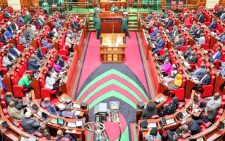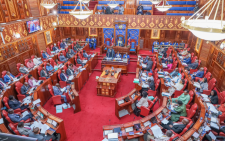When the 8-4-4 system of education was introduced in 1985, there was something of a panic among young men of my generation.
It meant learners who were in Standard Six at the time would spend two more years in primary school instead of one.
Rather than sit for the Certificate of Primary Education (CPE) — which had a maximum of 36 points — candidates would from then on sit for the Kenya Certificate of Primary Education (KCPE) — which had a maximum of 72 points at the time.
In districts like Nakuru, where boys became men after sitting for their primary exams, a tradition had been established that after CPE, the boys whose communities practiced the rite of passage would be taken to the village — or the bush in some communities — for initiation.
The introduction of 8-4-4 threatened to disrupt this long established order because it meant that in 1986, there would either be no initiation ceremonies or boys would become men without transitioning to secondary school. Both options were unwelcome.
The pupils did not like the first option, and parents hated the second. This scenario was enough to make the affected learners and their parents panic and view the new system as bad.
This view was to persist for many subsequent years.
Matters were not made any easier by the many experiments that the pioneer class was subject to. In my school, Heshima Primary School in Kwa Rhonda, they were made to build a grass-thatched hut as a group.
Odd experiments
Individually, they were required to make a traditional music instrument — the Orutu and drum were easiest to make — a stool, pyjamas, woolen table clothes and a plethora of arts and crafts that took a heavy toll on their time, energy and resources.
Today, that would be called Competence Based Curriculum (CBC). At the time, however, many frowned upon it. Boys did not understand why they were being required to knit yet they had no idea how to hold a crotchet, just as girls were opposed to the requirement that they make stools yet they had no idea what a mortise and tenon joint was. There were many other odd experiments, such as how to properly clean a hurricane lump and how to dry a jumper, some of which got learners into trouble with their parents.
Under CPE, the best student countrywide could only get a maximum of 36 points and the worst a minimum of six points.
With KCPE, however, this gap widened at 72 for best student and eight for the weakest. This created stigma among poor performers because being the only person to get an eight in your estate made you a marked person.
The best one could do, for boys, was to marry, become a mechanic or plumber, or retreat to the village and become a digger.
Girls were not lucky either. The only options open to them were heading off to towns to become house-helps or vegetating in the village and populating the earth.
Only a discerning few opted to join village polytechnics where they learned important artisanal trades and crafts that would later propel them to modest wealth once they started practicing.
The one thing that worked against the system was that it was introduced by the then President Daniel Toroitich arap Moi, a leader that many loved to hate.
That alone was enough to draw public ire against the system. Indeed, 8-4-4 became a byword for incompetence and the phrase “What else would you expect from an 8-4-4?” became the easiest way to dismiss any worker who failed to live up to their managers’ expectations.
Under the previous system, one spent seven years in primary, four in secondary — also called O’ Level — two in high school — also called A’ Level and three in the university. In the gap year, one was required to undergo training at the National Youth Service.
What that meant was that the pioneer 8-4-4 class could graduate from university ahead of their A’Level counterparts given that in those days, strikes were common in public universities and students would be sent home for up to eight months at a time.
At the workplace, 8-4-4 university graduates often found themselves at loggerheads with their managers who had only A’Level certificates.
The problem became so bad that when universities introduced parallel programmes, the earliest adopters were A’Level managers who wanted to prove a point to their 8-4-4 colleagues, some of whom had overtaken them in the organisational hierarchy.
Yesterday, the last class of 8-4-4 received their KCPE results at a time when those who are a class behind them are already in Junior Secondary School.
Many JSS boys have already become men this long holiday, by virtue of being in Junior Secondary. How will the two cohorts related going forward?
That is a space to watch. In all, this is a critical turning point in the history of the country’s education and affords stakeholders an opportunity to review the successes and failures of the 8-4-4 system with a view to informing how to improve CBC.




















